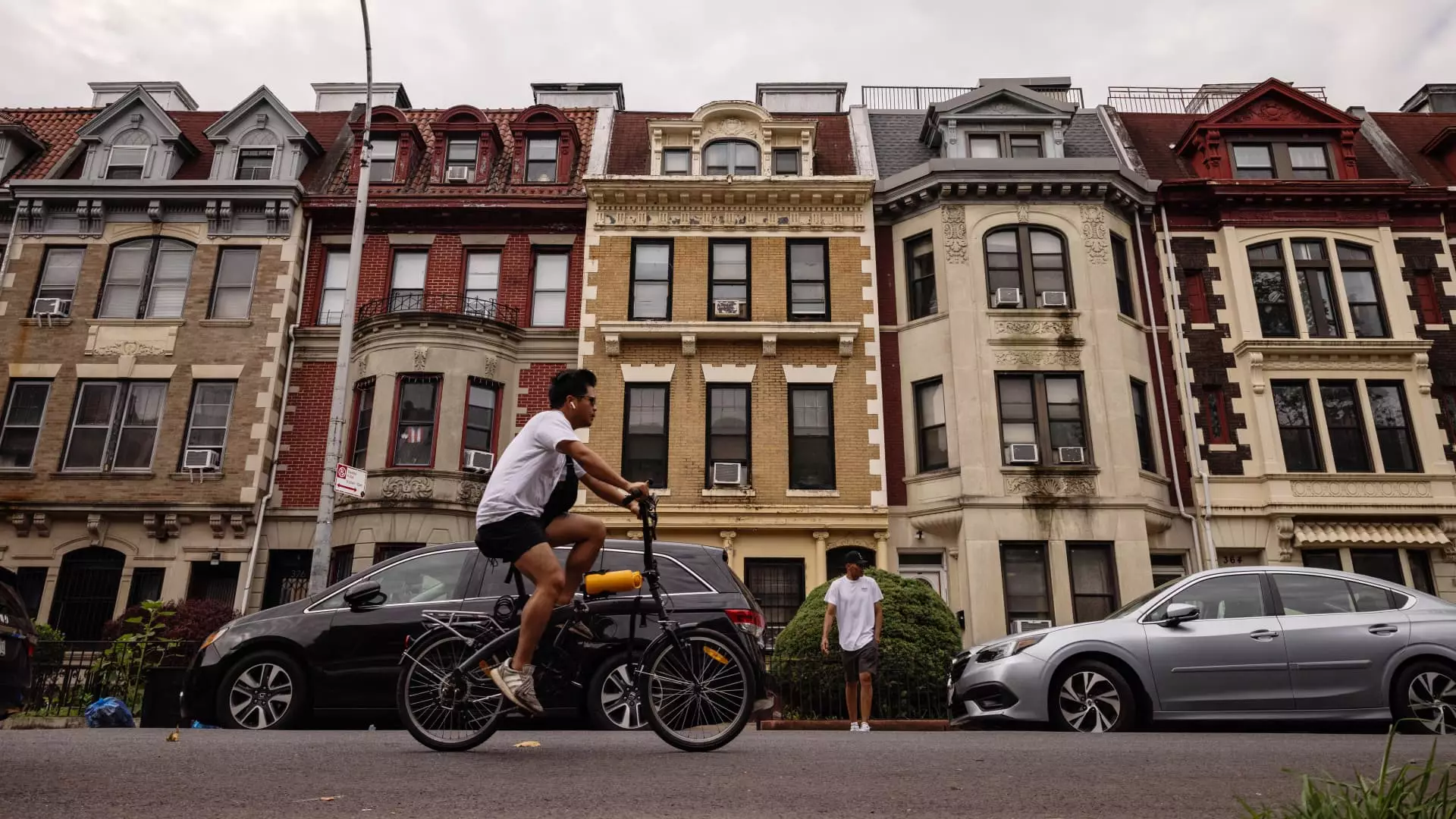The real estate scene has seemingly reached a paradoxical zenith in recent years. Last year saw the completion of nearly 600,000 new multifamily housing units, the highest since the era of disco and polyester suits. You might think this surging construction would mean ample rental options and a reprieve for weary renters. But alas, the reality is far more disheartening. Despite the increasing number of new apartments, a report by RentCafe indicates that securing a rental is becoming increasingly daunting. Far from easing the strain on renters, these developments appear to be little more than a temporary bandage over a festering wound.
The irony is striking: as developers chant the mantra of “more is better,” renters are confronted with mounting barriers to entry. How is it that, despite the explosion of new supply, approximately 93.3% of these housing units are occupied? The answer lies in a disturbing trend—less mobility among renters. Statistically, lease renewal rates are skyrocketing, climbing to 63.1% from 61.5% in just a year’s time. This stagnation is indicative not merely of tenant satisfaction, but also of an alarming economic climate where mortgage rates loom high, and the for-sale housing market has become a battleground of inflated prices.
A Deteriorating Rental Landscape
The notion of choice in the housing market is a cruel mirage for many. With each available apartment garnering an average of seven eager applicants, one must question the effectiveness of further construction. Instead of reducing competition, this high occupancy rate is merely exacerbating an already frayed rental landscape. The statistics paint a cumulative picture of desperation—there are virtually 14 applicants for each unit in Miami alone! Miami’s crown as the most competitive rental market is a testament to a surge in corporate relocations and burgeoning industries, yet it also reflects the chilling reality that more people than ever are scrambling to secure basic housing.
What draws professionals to Miami like moths to a flame? It’s a combination of a strategic location, alluring no-income tax advantages, and the magnetism of a bustling job market. However, as cities experience such explosive growth, one has to wonder: is this truly sustainable? The influx of corporations marks a shifting landscape, but it simultaneously creates a cycle that can swallow the very workers it attracts.
Strained Affordability and Rising Rents
Those seeking affordability in housing are finding themselves at the mercy of capricious rental trends. After a brief respite where rent prices seemed to show signs of easing, they have once again begun to rise. The nationwide average jumped by 0.3% in February—a harbinger of the busy rental season that lies ahead. For renters, the prospect of rising costs is a deeply unsettling reality that looms overhead. Collectively, rents fell 4.6% from their peak in August 2022, yet they remain hauntingly 20% more expensive than they were just two years ago.
As the market continues to tighten, the convenience of longer lease periods offered by landlords exacerbates the uphill battle for rental equity. What was once seen as a favorable lease option becomes just another form of entrapment for those who may be looking for mobility in an ever-turbulent economic environment.
The stark contrast between the rental price trajectory and wage growth underscores an unsettling disconnect that defies conventional economic trends. More construction may not equal more affordable housing—it signals a need to interrogate urban development models, zoning laws, and market dynamics that leave the most vulnerable renters out in the cold.
In a world where 600,000 new apartments can’t alleviate the pressure of housing competition, the narrative shifts from one of celebration to one of urgency. The emphasis on quantity over quality in real estate development may provide a temporary boost to the economy, but the human cost is altogether too dire to ignore. The housing crisis may not just be a hurdle but an all-consuming menace that requires urgent, structured dialogue across political lines and a broad coalition of stakeholders to tackle the ideology of supply-side solutions that continue to let many down.


Leave a Reply